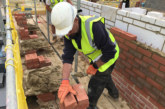To work effectively, the latest technologies rely on effective broadband provision. Tom Brough, Sales and Marketing Director of GTC, explores how ultrafast fibre can help make the connected home a reality.
The Government’s Future Telecoms Infrastructure Review July 2018 put forward recommendations of how to achieve full fibre connection for the whole of the UK by 2033. Amongst the key actions identified by the report were an industry-led switchover from copper wiring to full fibre and a guarantee that new-build developments would provide full fibre connection. Most, if not all, of new-build developers will now be fitting Fibre-to-the-Home (FTTH) in their new homes, although many sites retain the legacy of Fibre to the Cabinet.
Fibre broadband is now a standard feature of all new homes – homeowners already expect it, and with further government focus it is set to remain a key decision-making factor for house buyers. Housebuilders need to research now what is available both in terms of speed and quality for their customers and what the costs will be, including what discounts may be available. They need to establish how installing a fibre network will fit with their project management and scheduling, and build strong relationships with their chosen network provider to secure the smooth delivery of the technology.

Procuring Fibre-to-the-Home (FTTH)
Key in this sector is the level of service provided: it is essential to ensure that connections are made on time. One of the biggest areas of complaint from new homeowners is that their broadband/telco services are not live when they move in. With GTC this is not the case: services are live for when homeowners move in.
Then there is cost. Determining the best overall solution, commercially, technically and from a delivery perspective is very important. Not all network installation deals are created equal, however. It pays to shop around.
 Time saved by opting for the largest or most well-known network provider may prove expensive if other providers are offering better commercial packages. In particular, HBF members should research the special member deals that have been negotiated on their behalf. GTC, for example, offers discounts for HBF members, and in addition provides free site assessments, dedicated site technical management, and a complimentary sales-suite ultrafast broadband connection and telephone.
Time saved by opting for the largest or most well-known network provider may prove expensive if other providers are offering better commercial packages. In particular, HBF members should research the special member deals that have been negotiated on their behalf. GTC, for example, offers discounts for HBF members, and in addition provides free site assessments, dedicated site technical management, and a complimentary sales-suite ultrafast broadband connection and telephone.
Other deals offer alternative options, and therefore it is crucial to read the terms and conditions to make sure that the overall package of cost and benefits is right for each project.
Thirdly, there are advantages in obtaining fibre as part of a multi-utility package. Working with a single supplier can yield many benefits, not least that it can result in smoother scheduling and delivery efficiency, as a single project manager is responsible for the installation of all the utilities. With fibre as part of a single utility-installation plan, trenching, ducting and connections can all be co-ordinated, thereby avoiding the risk of miscommunication leading to delays and the re-opening of groundworks.
In addition, where fibre installation is part of a multi-utility package, under some deals, rebates may be automatically deducted from the overall cost, reducing administration costs for the developer.
But it is not just in terms of effective project management that a multi-utility approach can be beneficial. Having an overview of all the cabling and pipework onsite can provide the inspiration for innovation. We have been pioneering a new method of installing fibre with much of this construction work now being done by GTC directly. This removes the need for the housebuilder to lay a duct and chamber network and therefore significantly reduces their cost of installation.
Lastly, developers need to ensure that the FTTH network they opt for offers customers access to a range of service providers and a wide choice of packages, speeds and services.
Ultrafast opportunity
Surveys have shown, and housebuilders’ own experiences bear out that, for the majority of UK homebuyers, having a reliable broadband service is a ‘must have’. Whilst superfast speeds, defined by the Government as being download speeds in excess of 24Mbps, once seemed to be ambitious, they are now regarded by many as barely adequate.
Expectations in the market have been further raised by the Government’s commitment to full fibre which means that services based on upgrading cabinets and relying on copper wiring for new home connections appear as no more than sticking-plaster solutions. Delivery of the ‘connected home’ with all the lifestyle benefits that it brings is only possible if the network infrastructure has the capacity to support it. And that means nothing less than ultrafast FTTH will do.
Moreover, developers who are ensuring that new homes are truly ‘future-ready’, with high-speed broadband in place as the homeowner moves in, have a distinct competitive advantage in the market. Their homes have become the homes of choice for buyers, appreciative of the developer’s understanding of how vital it is to have immediate access to efficient broadband.
What to look for
Until relatively recently, the telecomms infrastructure market has been dominated by a very limited number of providers, and service to house builders has not been universally consistent. Fibre broadband today offers a considerable degree of choice for both housebuilder and homeowner. Choosing the right network operator with a range of Internet Service Providers (ISPs) can benefit both.
Good business sense
The speed at which demand for data is growing is breath-taking. Technology is opening up the possibility of revolutionary lifestyle developments in the home, but these cannot be achieved without ultrafast FTTH.
Today, FTTH is being offered as standard; the differentiation lies in the housebuilder’s choice of provider, one that ensures future-proof fibre connections for homeowners, as and when they require them, with high speeds, versatile service packages, and choice.









